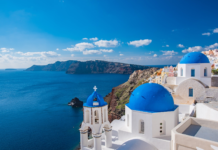Peru, a nation synonymous with the lost city of Machu Picchu, offers an extraordinary tapestry of history, culture, and natural beauty that extends far beyond its most famous landmark. For most travelers, the journey begins in Cusco, the ancient capital of the Inca Empire, and quickly expands into the surrounding highlands. The cornerstone of this experience is exploring the Sacred Valley Tours from Cusco, a fertile, picturesque corridor that served as the agricultural and spiritual heartland of the Incan civilization.
This article provides a comprehensive guide to experiencing the Sacred Valley through tours originating from Cusco, and outlines the broader context of popular travel packages designed to unlock the wonders of Peru.
The Sacred Valley: A Cultural and Historical Core
The Sacred Valley (El Valle Sagrado) is a chain of villages and archaeological sites nestled between Cusco and Machu Picchu, following the course of the Urubamba River (Vilcanota River). It runs roughly 60 kilometers long and is characterized by a milder climate and lower elevation than Cusco, making it an excellent place for travelers to begin their acclimatization to the Andes. .
Why Tour the Sacred Valley from Cusco?
Cusco, at an altitude of approximately 3,400 meters (11,152 feet), is the logistical and historical starting point. Sacred Valley tours are essential because they:
- Aid Acclimatization: Most key sites in the Valley (like Pisac and Ollantaytambo) sit at a lower elevation than Cusco, allowing the body to adjust to the altitude before the arduous journey to Machu Picchu or higher treks.
- Provide Context: The Valley’s sites are crucial for understanding the engineering prowess, cosmological beliefs, and agricultural innovation of the Inca before visiting the culminating site of Machu Picchu.
- Offer Logistical Convenience: Tours often conclude at Ollantaytambo, a major train hub, allowing travelers to transition directly onto the train bound for Aguas Calientes (the town at the base of Machu Picchu), saving travel time.
Essential Stops on a Sacred Valley Tour
Tours from Cusco typically cover the following highlights, though multi-day itineraries may offer a more in-depth exploration:
| Site | Altitude (Approx.) | Significance |
| Pisac Archaeological Site | 3,340m / 10,958ft | Known for its extensive Inca agricultural terraces that contour the mountain, and a vast ceremonial sector. |
| Pisac Market | 2,972m / 9,751ft | A vibrant town market, particularly bustling on Sundays, famous for its indigenous handicrafts, textiles, and traditional food. |
| Ollantaytambo Fortress | 2,792m / 9,160ft | A massive Inca fortress and religious site built of finely cut stone. It served as a vital military checkpoint and still features original Inca urban planning. |
| Moray | 3,500m / 11,483ft | Inca agricultural experimentation facility, featuring huge, sunken circular terraces that create microclimates for testing different crops. |
| Salinas de Maras | 3,380m / 11,089ft | Thousands of brilliant white salt evaporation ponds terraced into the mountainside, harvested since Inca times. |
Export to Sheets
Tour Logistics: Most Sacred Valley tours are a full-day commitment (8–10 hours). They typically include round-trip transport from Cusco, a professional English-speaking guide, and lunch. Access to the sites requires the Cusco Tourist Ticket (Boleto Turístico del Cusco), which is often purchased separately.
The Broader Picture: All-Inclusive Travel Packages to Peru
While the Cusco-Sacred Valley-Machu Picchu route is central to any trip, many travelers opt for comprehensive Travel Packages to Peru that span Peru’s diverse regions. These packages streamline logistics, manage internal flights, and ensure a cohesive experience across varied landscapes, from the coastal deserts to the high Amazon.
1. The Classic Peruvian Circuit (8–12 Days)
This is the most popular type of package, designed to cover Peru’s historical and cultural highlights efficiently.
- Lima (2 Days): Start in the capital. Focus on the UNESCO-listed historic center and the vibrant gastronomy scene in districts like Miraflores and Barranco. Lima is often referred to as the culinary capital of South America.
- Cusco and the Sacred Valley (4–6 Days): Includes acclimatization, a Sacred Valley tour, and the journey to Machu Picchu via the Inca Trail (for trekkers) or the scenic Vistadome/Expedition train.
- Puno and Lake Titicaca (2 Days): Travel by bus or plane to the high-altitude city of Puno (around 3,800m / 12,467ft) to visit Lake Titicaca , the world’s highest navigable body of water. Packages often include a boat trip to the unique floating islands of the Uros people and the natural islands of Taquile.
2. Peru’s Natural and Wilderness Packages (12–16 Days)
These extended packages cater to nature lovers and adventurers by combining the Classic Circuit with one or more of Peru’s natural wonders:
- The Southern Desert Coast (Nazca and Paracas): A diversion from Lima to the south for travelers interested in marine life (the Ballestas Islands, often called the “poor man’s Galápagos”) and the mysterious Nazca Lines , massive geoglyphs etched into the desert floor.
- The Peruvian Amazon (Puerto Maldonado or Iquitos): Packages typically include a 3- to 4-day stay at an Eco-Lodge in the Amazon rainforest. This provides an opportunity for wildlife spotting (monkeys, macaws, caimans), jungle hikes, and learning about indigenous cultures. Puerto Maldonado is a common gateway from Cusco.
- Arequipa and the Colca Canyon: A trip to the “White City” of Arequipa, renowned for its colonial architecture built from white volcanic stone, is often paired with a visit to the Colca Canyon, one of the deepest canyons in the world, famous for its magnificent sightings of the Andean Condor.
3. Luxury and Experiential Packages
For high-end travelers, specialized packages focus on bespoke experiences and comfort.
- Luxury Trains: Packages often incorporate the Belmond Hiram Bingham train to Machu Picchu or the Andean Explorer train between Cusco and Lake Titicaca, which offer gourmet dining and observation cars.
- Gastronomic Tours: Peru is a global food destination. Packages include curated dining experiences at Lima’s world-renowned restaurants (like Central or Maido) and hands-on cooking classes.
- Boutique Hotels and Haciendas: Accommodations are upgraded to boutique properties, historic haciendas (estates) in the Sacred Valley, or high-end glamping on trekking routes.
Key Considerations When Booking Peru Travel Packages
Choosing the right package or planning your own Sacred Valley tour requires attention to several critical details:
1. Altitude Management
Altitude sickness is the single most important factor. Travel packages should be designed for gradual ascent. The optimal plan is to fly into Cusco and immediately transfer to the Sacred Valley (Písac or Ollantaytambo) to spend the first 2–3 nights, as the lower elevation aids in acclimatization. Returning to Cusco after this initial period is usually problem-free.
2. When to Go (Best Season)
The peak travel season coincides with the dry season (May to September). This period offers sunny days and clear views, which are essential for enjoying the Sacred Valley and Machu Picchu. However, it means higher prices and crowded sites. The shoulder months (April, October, and early November) offer a good balance of weather, lower prices, and fewer crowds.
3. Inclusions and Exclusions
Carefully review what the package price covers:
- Flights: Does the package include international and/or domestic Peruvian flights (e.g., Lima to Cusco)?
- Entry Fees: Are the Machu Picchu ticket and the Cusco Tourist Ticket included? These are mandatory and must be booked in advance.
- Meals: Are all meals included, or just breakfast? Gourmet packages often include specific restaurant reservations.
- Guides: Ensure guides are certified, professional, and proficient in your required language.
4. Machu Picchu Access
Packages should clearly state the type of access to Machu Picchu:
- Train Class: Expedition (standard), Vistadome (scenic), or Hiram Bingham (luxury).
- Entrance Circuit: Machu Picchu now operates on circuits. The package should specify which circuit is included and if it allows access to Huayna Picchu or Machu Picchu Mountain (which require special, very limited permits).
Conclusion: Your Epic Peruvian Adventure
The journey to Peru is an exploration of layers—geological, historical, and cultural. The Sacred Valley Tour from Cusco is not just a sightseeing day; it is the necessary, foundational step that connects the Inca’s ancient capital with their most important retreat. By choosing a well-structured travel package, you can seamlessly navigate the country’s vast diversity, from the colonial elegance of Lima and the spiritual heights of Lake Titicaca to the humid ecosystems of the Amazon.
Whether you are walking among the salt pools of Maras, climbing the terraces of Ollantaytambo, or finally standing in awe of Machu Picchu, a journey planned around these key components ensures an immersive, educational, and logistically sound adventure into the heart of the Andes. Peru offers not just sights to see, but a history to walk through, a cuisine to savor, and a profound culture to embrace.
LOCATION
Amadeo repeto street tower tagle F-12
Cusco – Peru
info@culturalperutours.com
Culturalperutours@gmail.com
WEBSITE
https://culturalperutours.com/
Mobile: +51 974 306885
Mobile: +51974995090




